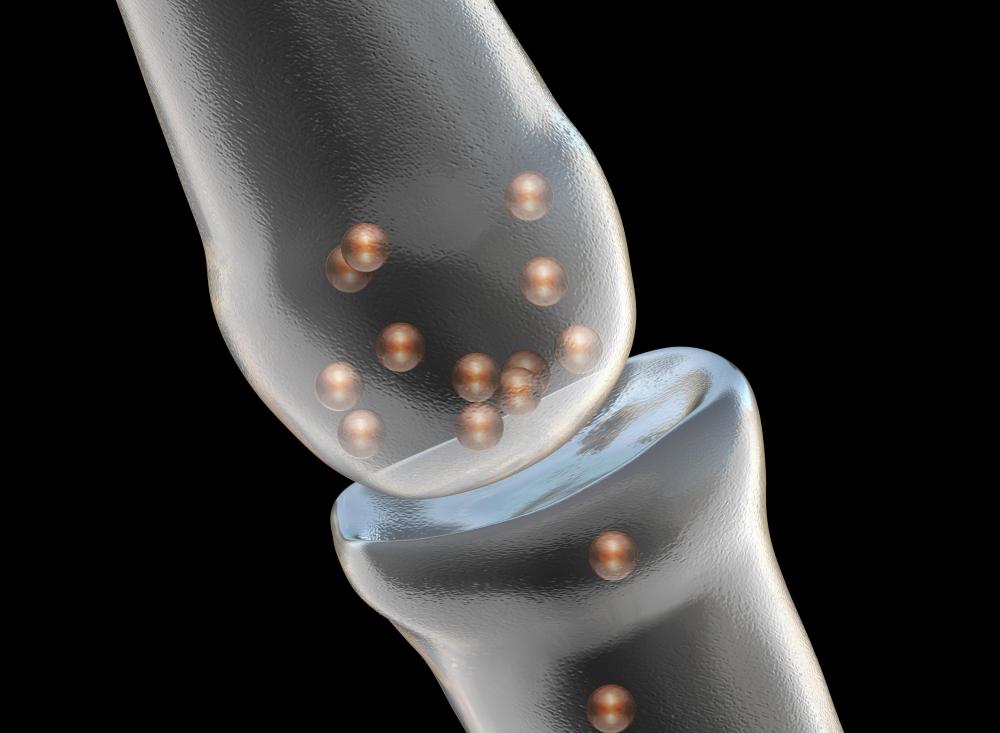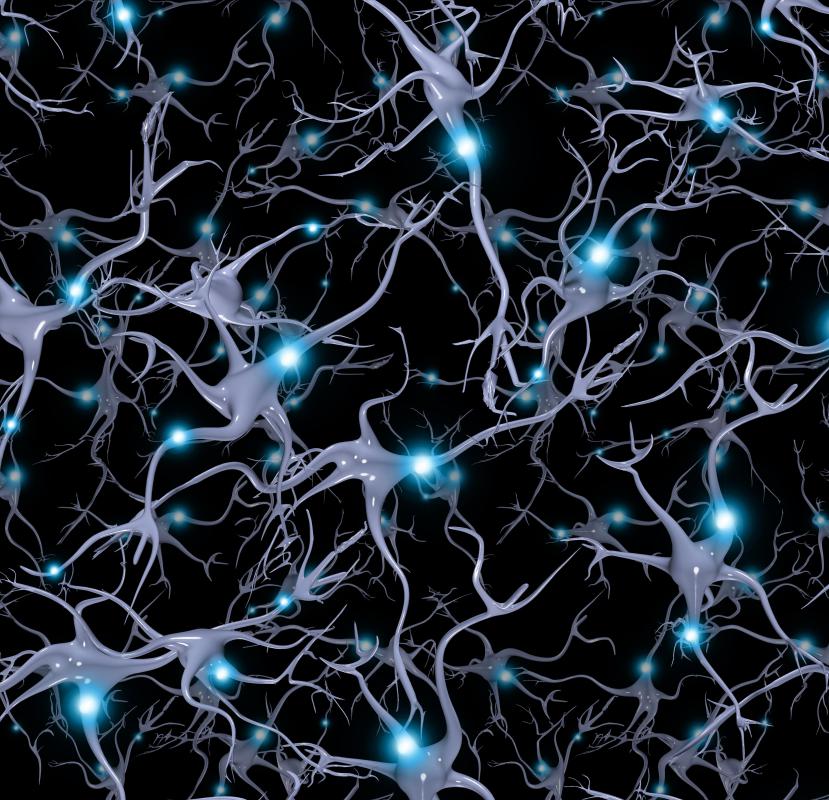At TheHealthBoard, we're committed to delivering accurate, trustworthy information. Our expert-authored content is rigorously fact-checked and sourced from credible authorities. Discover how we uphold the highest standards in providing you with reliable knowledge.
What is an Axon Terminal?
The axon terminal is located on one end of a neuron or nerve cell. It is the final part of a neuron to receive an electrical impulse and is also the area where the impulse is converted to a chemical signal. It transfers information from its neuron into another neuron, though it does not come into physical contact with the other neuron.
A neuron has a number of axon terminals. They link up with the dendrites of other neurons in the vicinity in order to transmit information from one neuron to another. Each terminal branches off from a neuron like fingers on a hand.

Electrical information travels through a neuron extremely quickly. While it is in the axon of the nerve, this signal is in the form of an electrical pulse. These pulses are very small, between 50 and 70 millivolts each. Once the electrical signal reaches the axon terminal, the information is converted into a chemical signal known as a neurotransmitter. The axon terminal then sends the chemical signal into the dendrite of the next neuron, which then converts this information back into an electrical signal and sends it down to the next neuron.

Information travels through a neuron in one direction. It enters the neuron through the dendrite, which contains many fingers that can pick up the transmissions from many different nearby neurons. The signal then travels down the axon, which can be extremely long compared to the size of other cells. The information in the axon is protected by a myelin sheath around the axon, which keeps the electrical signal from degrading as it moves along the neuron. At the far end of the axon, the signal enters a terminal before jumping across the synapse to the next neuron in the line.

An electrical signal jumps from the axon terminal to the dendrite of the next neuron without the two neurons touching. The gap between an axon terminal of one neuron and the dendrite of another is known as a synapse. The signals are released from the axon terminal in the form of neurotransmitters, which are special chemicals that fit into neuroreceptors on the dendrite.
AS FEATURED ON:
AS FEATURED ON:














Discussion Comments
@Ceptorbi - The axon hillock is the section of the neuron's cell body that connects to the axon. It is where the electrical impulses called action potentials originate. The impulses travel down the axon from the axon hillock.
What is an axon hillock?
Post your comments